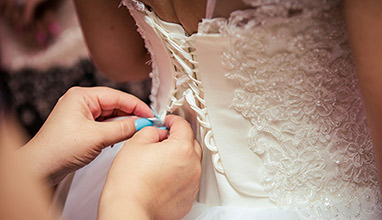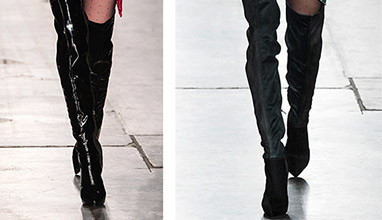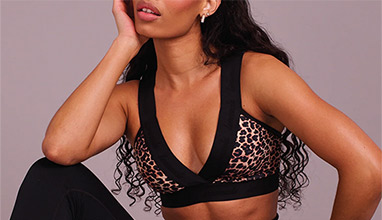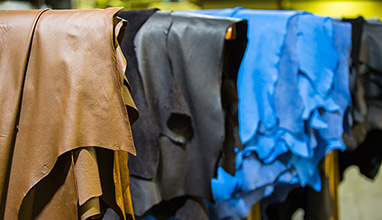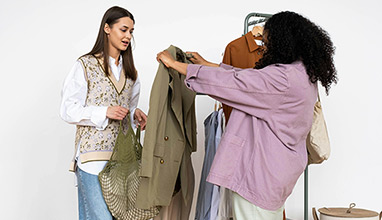Beyond the Battlefield: Camouflage Fabrics
Camouflage, initially developed for military stealth, has evolved dramatically in the past years. Its journey from utilitarian gear to a fashion statement mirrors changes in societal attitudes toward both military aesthetics and nature-inspired designs.
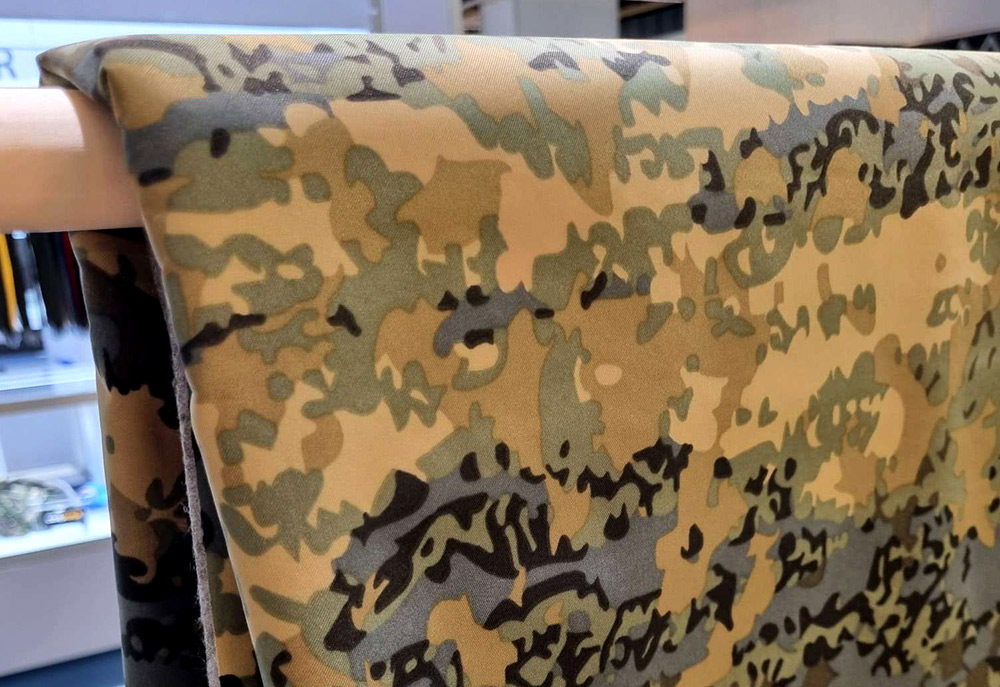
Camouflage Fabric, presented at Techtextil, Frankfurt, Germany, 23-26.04.2024. Photo by Be Global Fashion Network
Spotlight: Camouflage Fabrics
Camouflage fabrics are made from a variety of materials, each selected for specific properties that enhance functionality and comfort.
The main materials include:
Material Type |
Composition |
Characteristics |
Common Uses |
Cotton-polyester |
Blend |
Durable, comfortable |
General apparel |
Polyester |
Synthetic |
Quick-drying, durable |
Outdoor clothing |
Cotton |
Natural |
Soft, breathable |
Everyday wear |
Cotton-nylon |
Blend |
Strong, elastic |
Performance gear |
Stretch |
Varies |
Flexible, form-fitting |
Athletic wear |
The production of camouflage fabric involves intricate methods of weaving, dyeing, and finishing. These processes are designed to ensure the fabric not only mimics natural patterns effectively but also stands up to environmental challenges.
Multifunctional Attributes of Camouflage Fabrics
Infrared Reflection (IRR)
Infrared Reflection (IRR) technology is essential for camouflage fabrics used in military applications. This technology allows soldiers to remain invisible not only to the naked eye but also to infrared sensors, providing a significant tactical advantage in night operations and surveillance-heavy environments.
IRR-treated fabrics effectively reflect infrared radiation similar to the surrounding foliage, making them indispensable in modern warfare where electronic surveillance is prevalent.
Water and Oil Repellent Features
Water and oil repellent features are achieved through advanced fabric treatments that apply a protective coating. This coating prevents liquids from penetrating the fabric, ensuring that it remains lightweight and quick-drying. The oil repellent properties are particularly beneficial in environments where machinery or lubricants might come into contact with clothing, as they help in maintaining the fabric's integrity and cleanliness.
Waterproofing
Waterproof camouflage fabrics are essential for outdoor (e.g. hunting) and military gear, providing reliable performance in wet conditions. These fabrics are treated with layers of laminates or coatings that block water molecules while allowing vapor to escape, ensuring breathability. Such properties are critical for maintaining comfort and health, as they prevent water from entering while allowing sweat and moisture from the body to evaporate.
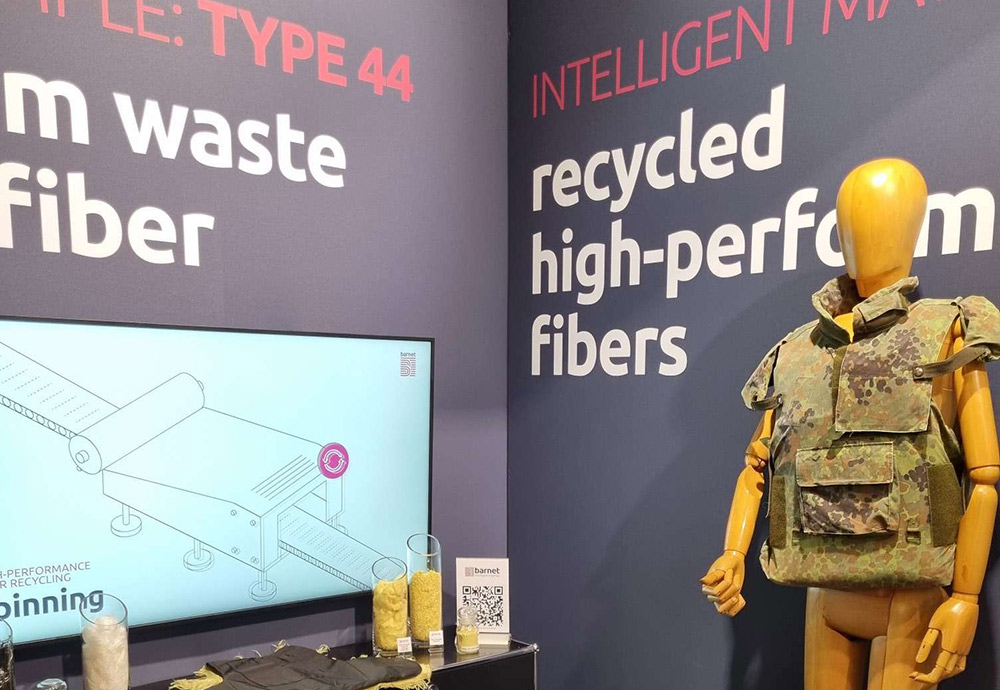
Camouflage Fabric, presented at Techtextil, Frankfurt, Germany, 23-26.04.2024. Photo by Be Global Fashion Network
Applications of Camouflage
Military
Camouflage plays a pivotal role in modern military operations. Beyond traditional uniforms, it is used in a wide range of military equipment including tents, covers for vehicles, and personal gear. The effectiveness of camouflage in these applications can significantly enhance stealth and survivability, reducing the likelihood of detection by enemy forces.
"The ability of IRR technology to mask heat signatures is a game-changer in modern military tactics. It's not just about hiding; it's about blending seamlessly into the thermal landscape," explains a spokesperson from Levitex a leading camouflage fabric supplier, emphasizing the strategic importance of this technology.
Hunting
For hunters, camouflage increases effectiveness by mimicking the surrounding environment, which is crucial for approaching wildlife without detection. Advanced camouflage can also reduce noise, an important factor when stalking prey.
The use of camouflage in hunting gear extends to blinds, backpacks, and other accessories, ensuring hunters are fully equipped to blend into their environment.
Fashion Industry
In the fashion industry, camouflage has transcended its utilitarian origins to become a symbol of style and resistance. Camouflage patterns have become a staple in seasonal fashion collections, allowing brands to capitalize on their bold, graphic quality. Even high-end designers often release special editions or capsule collections featuring camouflage as a key motif during both spring/summer and fall/winter seasons, aligning with the fashion industry's trend cycles. For example, in spring and summer collections, lighter fabrics and more vibrant, disrupted camouflage patterns reflect a more casual, lively vibe. In contrast, fall and winter collections might feature more subdued, traditional camo patterns on heavier materials like wool or tweed, aligning with the season's demand for warmth and comfort. Its ability to evolve while staying true to its roots is what keeps it a beloved and constantly revitalized trend in the fashion industry.
Fashion is always changing
Camouflage has moved far beyond its initial military use, becoming a versatile element in modern fashion.
In 2024, camouflage remains a dynamic and influential pattern in high fashion, consistently reimagined by designers to reflect contemporary themes and ideas. The integration of camouflage into high fashion collections is a testament to its enduring appeal among all age groups.
Hits: 5014 | Leave a comment





